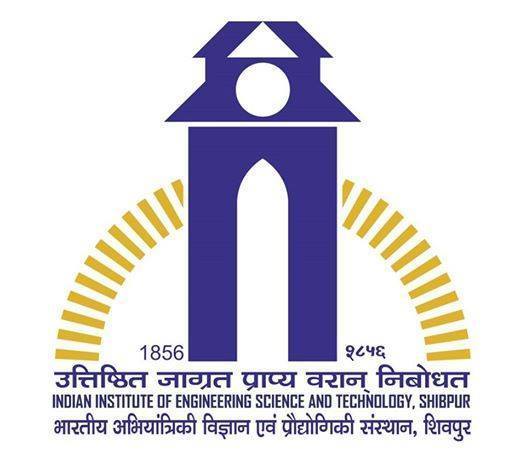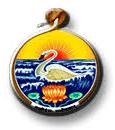Prof. Sabyasachi Sarkar
 |
Honorary Visiting Professor, Nano Science and Synthetic Leaf Laboratory at Downing Hall, Centre for Healthcare Science and Technology, IIEST, Shibpur |
Honorary Distinguished
Professor, Nano Science and Synthetic Leaf Cell, Dept. of Chemistry, Industrial & Applied Chemistry, Ramakrishna Mission Vidyamandia, Belur Math |
 |
Former Senior Professor and Head, Dept. of Chemistry, IIT, Kanpur
-
Home
- Reminiscence
-
Pesrsonal Details
- Contact Details
- Research
- Published Work
- Literary Work
-
Group
- Photo Galary
- Press News
- Site Map
Reminiscence:
Santhal Parganas to Chemistry

I was born in Birbhum ( meaning forest land )
district, West Bengal in the house of my maternal uncle but spent my
childhood in the adjoining district , Santhal Parganas. Earlier
Birbhum and Santhal Parganas districts remained undivided under the
name of Birbhum but fearing successive revolts after the first led (
before 1857) by Sidhu and Kanha Birbhum district was divided into
two by British . Being the eldest son of a well respected Government
pleader of the town, Jamtara, I enjoyed freedom to roam as his son
even in the adjoining jungles and mingled freely with young Santhal
people of my age group. Before joining school for my formal
education, I learned horse riding, hunting, fishing and cycling. My
grandfather presented me a Philips bicycle of 16 inch size imported
from England and I was rewarded by my father for my good hand
writing with the present of a Diana make ( England) air rifle. The
horse riding I shared regularly from my Santhal friend, Govind
Tudoo, who owned a pony, in exchange of my bike to him. My home
teacher supplied me fishing chord for fishing and continuously
supplied me magnifying glasses and other items like kites, gum,
marbles, battery, torch bulb, wire, cut film, screw driver, small
hacksaw and so many others on demand. Normally I used to show home
task to my tutor only when my demand of getting something has been
met. My home teacher loved me for my wildness and he was constant
supplier of my hobby materials. Just beneath the stair of our house
I got a place which became my hobby house. However, my mother taught
me to read Bengali and she constantly provided me books of novels
and classics adventure stories to read by ordering newer books from
the publishing houses from Kolkata regularly.
One day I decided to release the captive male and female singers
inside our gramophone who are forced ( I believed at that time ) to
sing by merciless twisting of their ears ( I meant winding of the
spring) as narrated by my eldest sister. One quiet afternoon I
completely unscrewed the gramophone. Fortunately for me the heavy
spring released its energy by de-coiling in the opposite direction
of me or I could have received severe spring blow. The local
mechanic later fixed it properly but my father who was very busy in
his profession listened to my mom's complain and declared that the
days of my holiday is over. My home teacher was replaced as he
refused to penalise me for my childish (stupid) activities and now
the new home teacher, a retired old person who actually taught my
father in the school came to train me with an iron hand.
His aluminium made spectacle cover received fresh dent everyday in
contact with my head. Within six months I learned sufficient
mathematics and English and one day appeared in the entrance test of
the local high school along with my two years elder sister. We both
were admitted in class VI. I never read in classes I to V and so I
got jumped promotion to start. This is the reason that I passed
M.Sc. at the age of 19. In school I got enough help and
encouragements from my science teachers in procuring chemicals and
glass wares by paying from my pocket money and I changed my hobby
house as my laboratory. I used to do several experiments in
chemistry including isolation of white phosphorous (curiosity over
its ignition in air) from bone ash by following sulfuric acid
treatment to create syrupy phosphoric acid and reducing it with wood
charcoal in an earthen retort which was placed in the coal oven for
heating. I shared coal oven after lunch preparation by my mom
followed by boiling of water by maid servant to clean clothes and
the afternoon time was ideal for my experiments. The earthen retort
was custom made by the local earth potter on my special request. In
fact he was father of my class mate, Kalipada, and Kaipada pleaded
more for my cause. I also learned electronics to assemble radio,
transistor, amplifier and photocell driven moving toys, photography
etc. and the basic knowledge I acquire by reading through a series
of books including encyclopaedia Britannica. These books were
presented to me by my father who used to meet all of my demand for
which I had to write a letter to him narrating the reasons and
justification of my requirement.
After one year ( pre-university) in St Xavier's college, Ranchi I
moved to Kolkata ( Calcutta University ) for my B.Sc. honours in
chemistry study but in most of the better known colleges the
admission were closed as I waited long period to get the release of
my pre-university examination result of Ranchi University. With
heavy heart I was returning back to Ranchi for my future study. As I
had to wait for more than five hours at Howrah Station to board the
train I decided to pay a visit to the Belurmath, Howrah on that
Sunday. It was mid of June, 1961 and before entering the main gate
of the Belurmath I saw a building to its left side with the sign of
Ramakrishna Mission Vidyamandira. I saw an elderly monk wearing
ochre colored cloth just stirring at me a few yards inside the gate
of that college. I stepped in to offer my pranam to him and the
first sentence he uttered to me, "want to study here?" I remained
spell bound and speechless and on nodding in the affirmative he
asked me to show him the mark sheets of my previous examinations. I
presented my School Final mark sheet , and a letter from the
Principal, St.Xavier's college for my bonafide as a pre-varsity
student and narrating that the mark sheet is due to come and the
first page of a couple of days old Ranchi News paper where my name
was printed amongst the top successful students. I got admission in
that Sunday in this college and later I justified my late and Sunday
entry by securing first position in the future examinations. Swami
Tejaswanand , the Principal Maharaj has been very fond of honours
students because of our lengthy laboratory hours where most of the
times we missed our evening Tiffin. He waived us from the mandatory
evening prayer if we were continuing our laboratory experiments in
late evening. He even allowed us to go for laboratory experiments on
Sundays where we ( the students) were in charge of controlling
everything including charging of the gas plant. I owe this to
Maharaj who thus helped me enormously to master my analytical skill.
After my M.Sc. I started my research on rhenium chemistry under the
mentorship of the Late Professor P.B. Sarkar in the University
College of Science, Kolkata. Professor Sarkar was a direct disciple
of Acharya P.C. Ray. My research in the first couple of weeks has
been very challenging . He provided me 10 gm of potassium perrhenate
from his Johnson Matthey, England bottle with 99.99% purity. He told
me that all wash solution should be preserved to recover rhenium as
it is costly. In the first week I synthesised the cyano complex of
rhenium which was made by my predecessor in that laboratory. On
reporting he asked me if I checked the purity of the starting
material, potassium perrhenate. Knowing that I believed
Johnson-Matthey label he became unhappy and said that I should have
checked its purity by analysing the percentage of potassium and
rhenium present in that salt before the start of my experiment. He
provided me a reference in Monatshefte fuer Chemie to consult for my
next part of reaction. I found the article written in German and
could not do much. In our next meeting when I informed my inability
to read German , he became angry and asked me to show my admission
card in German class in Max Mueller Bhavan, Kolkata next day in his
residence . I was like his grand son by age and after showing my
admission in German class he offered me sweets and samosa and a cup
of tea and opened his memory lane to narrate that how he and Prof.
Megh Nad Saha being room mate in the Hindu hostel used to wake up
early morning to practice German and French languages during their
B.Sc. studies.
In 1970, my research was almost completed but unfortunately Prof.
Sarkar faced serious kidney problem and became bed ridden and he
quitted his emeritus scientist position from CSIR that led to the
termination of my fellowship.
I roamed the entire north India for a suitable position and finally
got help from Prof. R.P Rastogi who asked me to join the newly
created Post-Graduate Department in Chemistry, T.D. College, Jaunpur
,affiliated to Gorakhpur University. The Principal of the said
college, Mr. H.N. Singh has been very kind to me. He helped me to
create research laboratory there where M.Sc. students can do
research projects and also I received some money from the State
Council of Science and Technolgy to perform my research. Professor
Rastogi provided me some rhenium metal which was found in the
chemistry store of the Gorakhpur University and remained unused . I
completed my doctoral thesis under Prof. Rastogi . He told me that
being a physical chemist he could not get the full essence of my
contribution but he had arranged to send my thesis to Professor H.J.
Emeleus of Cambridge for his evaluation . I got the evaluated thesis
copy back from Prof. Emeleus with the note, "with best
compliments";. The Indian examiners were Prof. R.C. Mehrotra and
Prof. A. Chakravorty and Prof. Chakravorty came to conduct my viva
examination. Then I moved to Germany as Humboldt Fellow to work with
Prof. Achim Mueller in early 1976 and even today we are in
collaboration. Rhenium being costly so my post PhD research started
with molybdenum which has close resemblance to rhenium. The
association of group VI A and B has been great so molybdenum and
sulfur chemistry has been pursued that led to understand some basic
non carbonyl cluster chemistry. The stage of bioinorganic chemistry
was set in the mid seventies and I ventured there as a young
prospector. Finally I can see the beginning of the chemical
Darwinism with the most primitive reaction on this earth and that is
the reduction of carbon dioxide. Also I like to understand the size
dependent changes in the reactivity pattern based on the self-
assemblies from molecular via nano and micro to macro level that
lead to diverse pattern in chemical evolution. I enjoyed practicing
chemistry alone and also with many students with similar liking. It
is the prologue of a humble waltzing through the molecular contours
of life.
(This reminiscence was written on 65th birth anniversary celebration held at IIT Kanpur in 2012.)